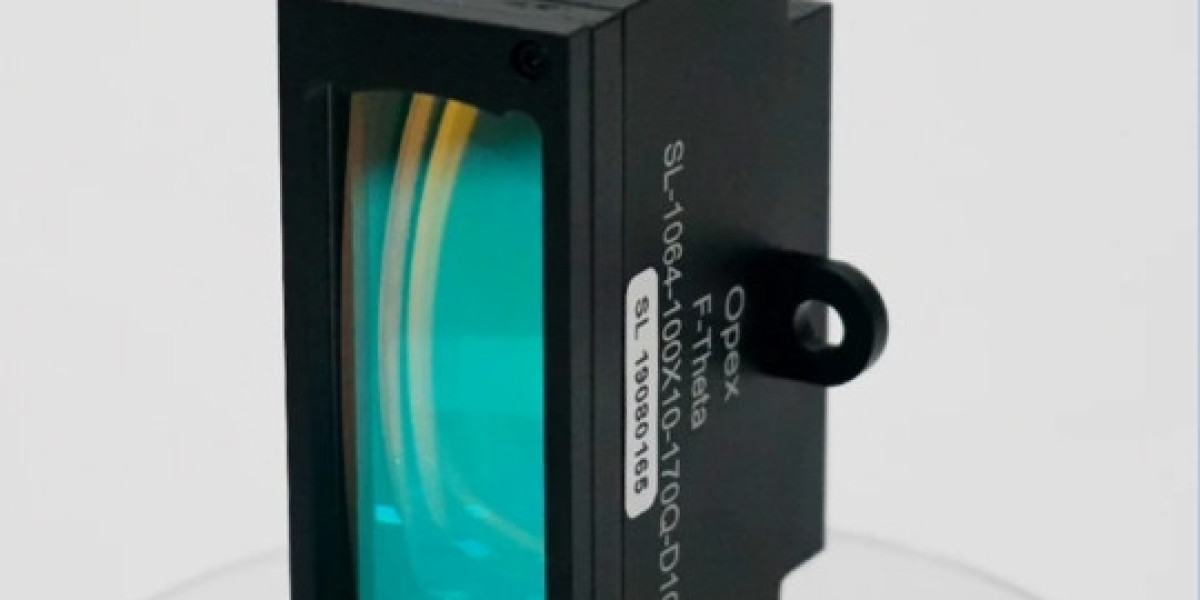Unlike a regular optical lens, which focuses light in a broad spectrum, a laser lens must deal with highly concentrated and coherent beams of light. That makes its role unique and central in the field of laser-based systems.
The Function of a Laser Lens
A laser lens works by focusing, shaping, or redirecting the beam according to the intended application. Depending on its design, it can concentrate the beam into a pinpoint focus for cutting or welding, expand it for scanning applications, or collimate it into parallel rays for medical procedures. The lens must be made with materials and coatings that can handle high levels of energy without degrading, which means it is engineered with exacting specifications.
In practice, the performance of a laser system is only as good as the lens it uses. If the lens alignment or surface quality is compromised, the entire system suffers, leading to reduced efficiency or inconsistent results. This is why industries invest heavily in precision-ground optics and coatings that extend the operational life of each lens.
Laser Lens in Industrial Manufacturing
Factories around the world rely on laser-based systems for welding, engraving, cutting, and marking. In these processes, the laser lens plays the decisive role of controlling the heat distribution. A poor-quality lens may scatter the beam, causing uneven edges or burns on the material. On the other hand, a well-calibrated laser lens ensures repeatability and accuracy, which are essential for industries like aerospace, automotive, and electronics.
One example is in sheet metal cutting, where the thickness of the material demands a stable focus. A laser lens with anti-reflective coatings and high thermal resistance makes it possible to achieve consistent cuts even over extended operating cycles. Similarly, in engraving or marking applications, the ability to focus down to micro-level precision is only possible because of the design of the lens.
Laser Lens in Medical Technology
In medical applications, the laser lens becomes an instrument of precision that often has life-saving implications. Surgical lasers, dermatological treatments, and ophthalmic corrections all rely on the controlled delivery of laser beams. For instance, corrective eye surgeries such as LASIK depend on a lens system that directs the laser beam with sub-millimeter accuracy. A misaligned or substandard lens would compromise patient safety and treatment effectiveness.
Beyond surgeries, even non-invasive treatments like skin resurfacing or dental procedures rely on the stability of a laser lens. Each treatment demands a different energy density, beam shape, and focus depth, which the lens enables by adjusting the output. This flexibility underscores the critical importance of precision engineering in lens manufacturing.
Research and Development with Laser Lens
Research laboratories also make extensive use of laser lens systems. From physics experiments to material analysis, the ability to focus and control a laser beam is vital. In spectroscopy, for example, the lens directs the laser onto a sample at precise angles, allowing researchers to study how the material interacts with light.
In particle trapping experiments, scientists use specialized lenses to create "optical tweezers" that can manipulate microscopic particles or even biological cells. Without the high degree of control provided by the laser lens, such groundbreaking research would not be possible.
Materials Used in Laser Lens Manufacturing
A laser lens is not manufactured from ordinary glass. Instead, specific materials are chosen for their optical clarity, durability, and ability to withstand intense energy. Commonly used materials include fused silica, quartz, sapphire, and specialized optical glasses. These are further enhanced with anti-reflective coatings that reduce energy loss and prevent damage.
The choice of material depends on the wavelength of the laser in use. For example, ultraviolet lasers require lenses made from fused silica due to its excellent transmission in the UV range. Infrared applications, on the other hand, may use zinc selenide or germanium lenses, which handle long wavelengths effectively.
Maintenance of a Laser Lens
Since the lens sits directly in the path of a high-energy beam, regular maintenance is essential. Dust, oil, or microscopic scratches can scatter the beam, leading to loss of efficiency and possible damage to the entire laser system. Operators often use specialized cleaning techniques, including non-abrasive wipes and optical cleaning solutions, to maintain surface integrity.
Another important factor is lens alignment. Even a slight misalignment can distort the beam path and reduce system performance. That is why laser systems often include adjustable mounts that allow fine-tuning of the lens position.
Laser Lens in Everyday Technology
While industrial and medical applications are the most visible, the laser lens is also present in everyday technology. Devices such as barcode scanners, DVD players, and laser printers rely on a small lens to guide the beam across surfaces with accuracy. In consumer electronics, the lens is engineered to be compact, reliable, and cost-effective while still delivering the necessary precision.
In modern communication systems, fiber optic technology uses laser lenses to couple light into fibers. This is an invisible yet critical application that powers the internet, data transfer, and global connectivity.
Emerging Innovations in Laser Lens Technology
The evolution of laser lens design continues as industries demand greater precision and durability. Advances include adaptive optics that can adjust focus in real-time, damage-resistant coatings, and lenses capable of handling ultra-short pulse lasers. These innovations open new possibilities in fields like micromachining, quantum computing, and medical imaging.
As manufacturing techniques improve, lenses are also becoming more accessible, allowing smaller companies to integrate laser systems into their production lines. This democratization of technology is driving progress in multiple sectors simultaneously.
Final Thoughts
The role of the laser lens goes far beyond being a simple piece of glass in front of a beam. It is the cornerstone of accuracy, safety, and efficiency across industries as diverse as manufacturing, healthcare, research, and consumer technology. Every cut in metal, every pulse in surgery, and every scan in laboratories depends on the performance of this single component.
As technology continues to evolve, the laser lens remains central to enabling progress. With ongoing innovations in materials, coatings, and design, its importance is set to grow even further, shaping the future of industries that depend on precision and control.













